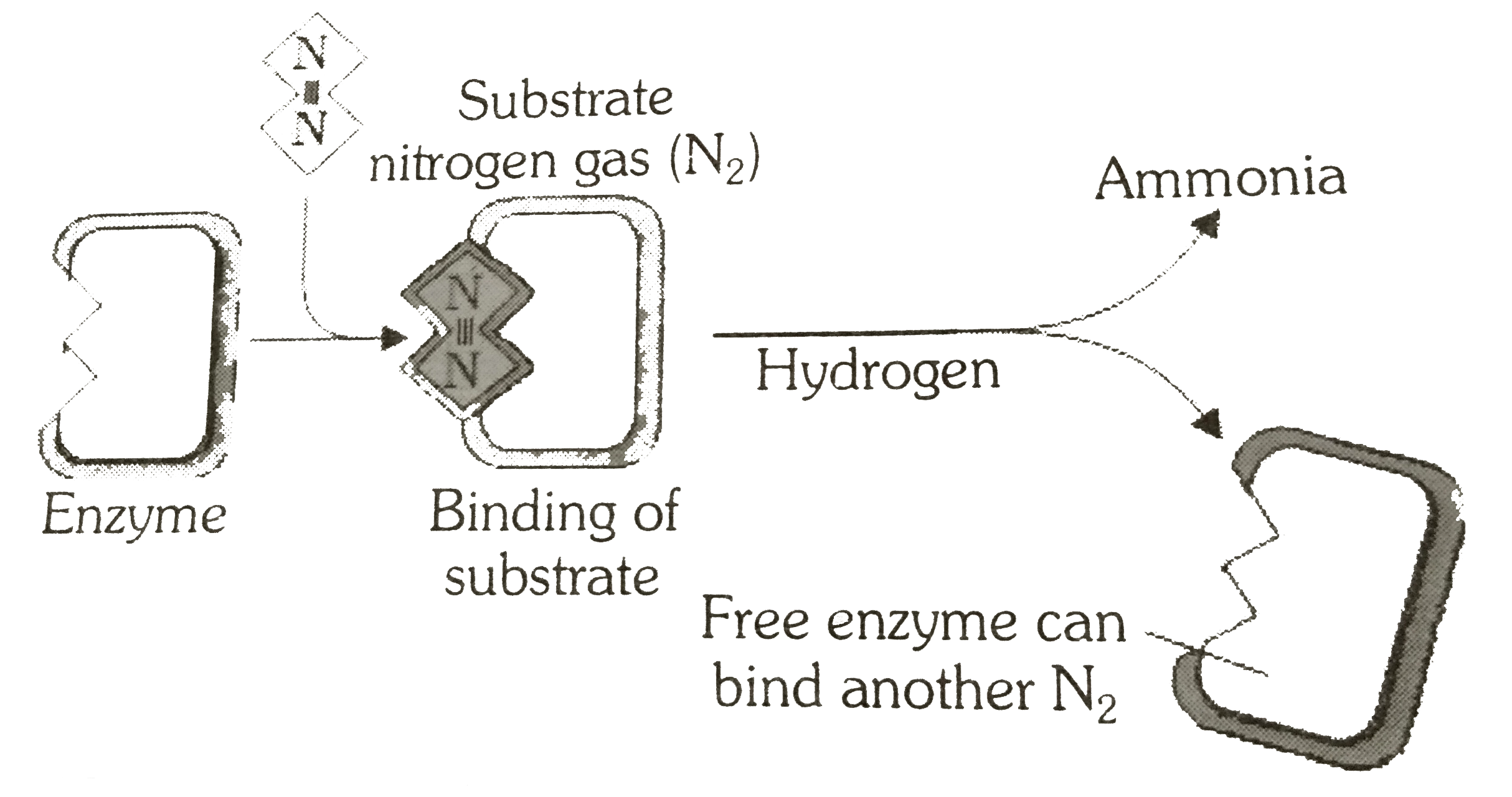Reduction of one molecule of nitrogen into 2 molecules of NH3 consumes
4 molecules of ATP
16 molecules of ATP
56 molecules of ATP
38 molecules of ATP
The correct Answer is:B
To solve the question regarding the reduction of one molecule of nitrogen into two molecules of ammonia and the ATP consumption involved, we can break it down into the following steps:
Step 1: Understand the Process of Nitrogen Fixation
- Nitrogen fixation is the process through which nitrogen gas (N₂) is converted into ammonia (NH₃). This process is crucial for making nitrogen available to living organisms.
Step 2: Identify the Reaction
- The chemical reaction can be summarized as:
N2+6H++6e−→2NH3
- This indicates that one molecule of nitrogen gas is converted into two molecules of ammonia.
Step 3: Determine ATP Consumption
- According to the nitrogen fixation process, it is known that the conversion of nitrogen to ammonia requires energy in the form of ATP.
- For the production of 2 molecules of ammonia from 1 molecule of nitrogen, it is established that 8 ATP molecules are consumed.
Step 4: Calculate Total ATP for One Molecule of Nitrogen
- Since the question asks about the consumption for one molecule of nitrogen, and it produces 2 molecules of ammonia, we need to consider the total ATP required:
- For 1 molecule of nitrogen (N₂), the total ATP required is:
8 ATP (for 2 NH3)×2=16 ATP
Step 5: Conclusion
- Therefore, the reduction of one molecule of nitrogen into two molecules of ammonia consumes 16 ATP molecules.
Final Answer:
- The correct answer is 16 ATP molecules.
---
- Nitrogen fixation is the process through which nitrogen gas (N₂) is converted into ammonia (NH₃). This process is crucial for making nitrogen available to living organisms.
- The chemical reaction can be summarized as:
N2+6H++6e−→2NH3
- This indicates that one molecule of nitrogen gas is converted into two molecules of ammonia.
- According to the nitrogen fixation process, it is known that the conversion of nitrogen to ammonia requires energy in the form of ATP.
- For the production of 2 molecules of ammonia from 1 molecule of nitrogen, it is established that 8 ATP molecules are consumed.
- Since the question asks about the consumption for one molecule of nitrogen, and it produces 2 molecules of ammonia, we need to consider the total ATP required:
- For 1 molecule of nitrogen (N₂), the total ATP required is:
8 ATP (for 2 NH3)×2=16 ATP
- Therefore, the reduction of one molecule of nitrogen into two molecules of ammonia consumes 16 ATP molecules.
- The correct answer is 16 ATP molecules.
Similar Questions
The given figure represents the Nitrogens fixation. See the diagram and select the correct option

I. Nitrogenase catalyses the reaction
II. The formation of ammonia is a reductive process
III. One molecule of nitrogen produces two molecules of ammonia
IV. Nitrate raductase catalyse the reaction
V. Formation of ammonia is an oxidation process
VI. One molecule of nitrogen produces one molecule of ammonia
View SolutionOxidation of one molecule of NADH gives rise to (A)______ molecules of ATP, while that of one molecule of FADH2 produces (B)____ molecules of ATP.
View Solution
Knowledge Check
During N2 fixation, reduction of one molecule of N2 into two molecules of NH3 consumes. . . Molecules of ATP. Fill in the blanks with correct option.
A4B16C56D38Assertion : Oxidation of one molecule of NADH gives rise to 3 molecules of ATP and that of one molecule of FADH2 produces 2 molecules of ATP
Reason : The number of ATP molecules synthesised depends on the nature of the electron donor.AIf both assertion and reason are true and reason is the correct explanation of assertionBIf both assertion and reason are true but reason is not the correct explanation of assertionCIf assertion is true but reason is falseDIf both assertion and reason are falseNitrogen molecule contains
ATwo o and one a bondsBTwo o and two bondsCOne o and one z bondsDOne o and two bonds
In the formation of nitrogen molecule.
View SolutionA molecule of ammonia (NH3) has ( अमोनिया अणु है )
View SolutionThe given figure represents the Nitrogens fixation. See the diagram and select the correct option

I. Nitrogenase catalyses the reaction
II. The formation of ammonia is a reductive process
III. One molecule of nitrogen produces two molecules of ammonia
IV. Nitrate raductase catalyse the reaction
V. Formation of ammonia is an oxidation process
VI. One molecule of nitrogen produces one molecule of ammonia
View SolutionIn a segment of DNA molecule there occurs 200 molecules of adenine nitrogen bases and 200 molecules of cytosine nitrogen bases. What will be the total number of purine nitrogen bases in this segment ?
View SolutionBond angle in NH3 molecule is
View Solution
